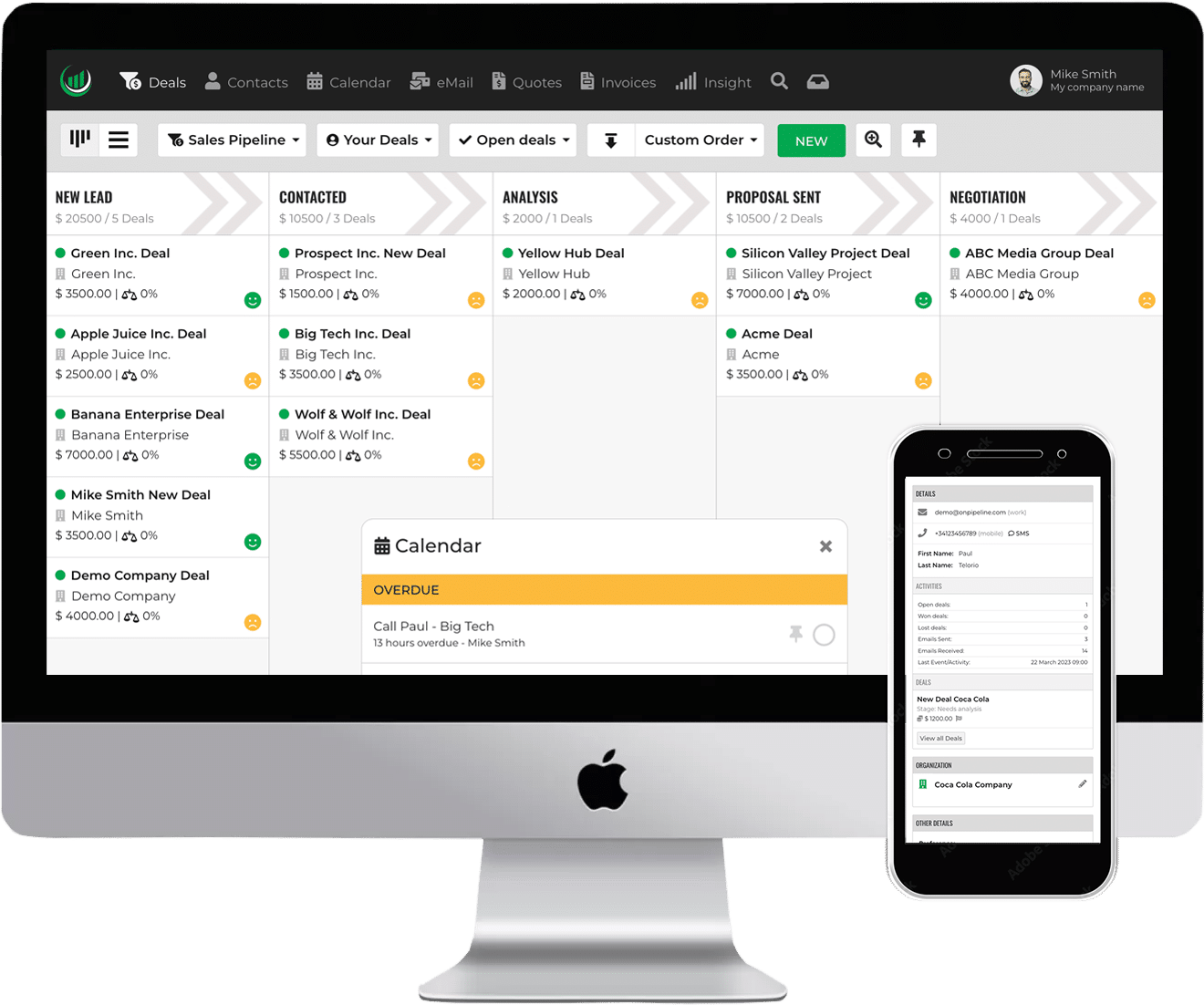Closing a deal is the final stretch a salesperson must cross to bring home the bacon. But what does “always be closing” mean? Does it mean to be an aggressive marketer perpetually pushing the prospect? Or a hard worker who always goes the extra mile?
Closing is a make-or-break moment in sales. Hence, you must select the proper technique to seal the deal. Here are the ten proven tips to help you create a winning game plan.
Top 10 Sales Techniques
Every salesperson wants to close the deal. It’s the only factor that decides if all their hard work has paid off.
That’s not easy! Sales reps often experience lots of pressure when making a sale, and are always being exposed to sales objections.
But, if they know what to expect and prepare accordingly, the sales process won’t be that challenging. Hence, to lend you a hand, we enlist the ten effective techniques to master the art of closing.
1. Relationship
As a salesperson, you should build a good rapport with every client your team encounters. Fellowship in sales means creating a friendly and cooperative relationship with customers to earn their trust.
The more you get to know your client, the easier the process. Once your clients trust you, they will listen to your ideas and advice. With trust bridging you and your customer, you can expect smoother sales and long-term business relationships.
Here comes the reality check – how do you build rapport with buyers? The first step is to make the time and space for it. Invoke your conversational skills and break the ice. However, you should be careful to make a sincere connection.
In Customer Relationship Management, you should be true to yourself when building a rapport with a client. While “be yourself” seems a bit cliche, it always works. Try not to overdo it and ask questions to encourage cooperation.
2. The Needs
Flashy promotions may attract consumer attention for a while but aren’t likely to inspire long-term brand loyalty. Hence, a salesperson should focus on customers’ needs and propose a product or service accordingly.
A Customer is more likely to return if he finds the product compelling. A consistent match between your prospects’ desires and the product you’re offering to stay relevant. Identifying your client’s needs beforehand helps you gain a competitive edge.
The best way to identify consumer needs is to take a systematic approach. Run a customer needs analysis to get valuable insights into your target market and use customer profiling. You can either initiate direct communication with your clients or conduct surveys.
In addition, salespersons should use social listening to track what their clients talk about. Focus on a small group of people, map their journey, and create a winning sales strategy to close the deal.
3. The Assumptive Close
Touted as a prominent closing technique, the assumptive close is where a salesperson negotiates with the client as if the deal is done. The goal is to bring positivity. And by asking assumptive questions, you get the prospect’s mind working on making a decision.
This sales technique doesn’t allow customers to sit on your offer. It, thus, eliminates the chances of conjuring up objections. However, employ it cautiously, as it could be offensive if used inappropriately.
The sales rep should use this technique only when the prospect has checked most boxes in each process step. Use it if you think the customer is mostly on your side. It’s best not to employ this approach if the client isn’t impressed with your offering or looking at competitors.
4. Sharp-Angle Questions
Sometimes, you come across customers who are better negotiators than you. They know how to make you run in circles to get what they want. Such prospects often ask for discounts or add-ons, thus making you give up on them.
In that case, you should try a sharp-angle close technique to catch your clients by surprise. Using this tactic, you can answer their questions with another relevant question to close the deal.
For example, when they ask for an add-on or price reduction, you should reply positively and ask if they will sign the contract today. Likely they won’t be expecting this response. If you get a positive response, the deal is done and dusted.
5. Alternative Option
Are you still far away from closing a deal? Try shifting a focus onto a different product or service. Giving choices when customers are iffy about the proposed option can help move the deal forward.
But here’s a catch. The choice should sync with customers’ desires and help you take a step forward toward the close. Salespersons should use this Alternative Close approach only when prospects don’t have queries or objections about your product.
Choices often simplify decision-making and get them to commit to your product.
Try Onpipeline for Free6. Sense of Urgency
Commonly known as the Urgency Close, this sales technique requires creating a sense of urgency. It is where you make an offer that includes freebies to promote an immediate purchase.
This technique helps overcome inertia when a prospect wants to buy but isn’t pulling the trigger for some reason. Moreover, it gets the customers’ undivided attention in real-time and lets you close the deal immediately. To get the best out of it, mention “limited time offer” or “limited products left”.
But remember, this approach only works when the prospect is on the verge of buying your product. The sense of urgency creates a FOMO (fear of missing out), thus nudging the prospect over the proverbial line to get a product.
Also, you should establish value before jumping into this technique and offering discounts. Ensure the offer is genuine; otherwise, you’ll lose your prospect’s trust. Do not make false offers, as it can hurt your chances of closing future deals.
7. The Summary Close
This technique works when the prospect evaluates offers from multiple vendors. The Summary Close is an excellent opportunity to remind the prospect about your product’s key features and benefits.
Simply, it repeats the terms of offers to help the customer visualize the entire package. Remember to refrain from introducing new facts and features. Instead, you only give prospects a glimpse of your products to encourage them to buy them.
Summary Close is effective when you have gone through an extensive discussion/ evaluation. It is helpful to get the attention and remind them of your product to make a decision.
8. Take the Empathy Route
Not every deal has to be closed using pressure or leverage. Sometimes, you should take the empathy route and shows your concern toward the clients. When a customer says he’s not ready to decide, take the higher road and give him time to think.
Empathizing with your prospects can help you build a special bond with them. It further helps create better relationships with your clients, which can be useful in the long run.
Employing an empathetic approach shows that you care about them as fellow beings. Hence, use empathy as a key driver in closing conversations to get favorable results.
9. The Calendar Deal
Are your clients on the fence when signing the deal? Consider using the “Calendar Close” technique and help make up your mind. Suggest a date in the near future to finalize the deal. It eliminates the hassles of back-and-forth exchanges.
Moreover, this approach fixes a timeframe by which the prospect should come to a decision. It takes the burden of decision-making off of the customer and helps speed up the process. The best part – you can use the Calendar Close technique and deal management tools wherever applicable and yield positive results.
10. Give Something for Nothing
Your customer will always light up for a freebie regardless of your industry. So, use this human nature to your advantage and get leads close. The Something for Nothing technique involves giving your customers a free add-on in goodwill.
It makes the prospects feel valued and special. And they may feel inclined to take you up on your offer, as humans feel the need to return favors.
But remember, the freebie should be of value to them and less value to you.
The add-ons must be well-thought. For example, you can offer an AC stand with your Air Conditioners but cannot give another AC to gain their interest. Also, this technique works wonders if you are an early-stage startup. But, it might not be worth or desirable if your company has gained brand authority.
Final thoughts:
There’s no one-size-fits-all approach that works when closing a deal. Hence, mix and match these options to get desired outcomes. So, why wait? Juice up your rusty sales pipeline with the proper closing techniques. Keep track of which methods work and for which customers. With time, you’ll be better at selecting the best road to take at each sales meeting.
Questions and Answers
To gain clients’ trust and make them more receptive to your products or services, it’s crucial to build a strong relationship.
Clients who trust you will be more likely to listen to your recommendations and view your offerings positively. By getting to know your clients better, you can tailor your approach and solutions to meet their specific needs.
Also, solid relationships with clients can lead to repeat business and referrals. This can expand your client base and increase sales opportunities.
Understanding a customer’s needs is important for several reasons. You can change their approach and suggestions based on what customers like, so their offerings are more attractive. By using this focused approach, you can address customer problems and desires while building trust and rapport. Customers will feel understood and valued!
Salespeople can build lasting relationships and loyalty by focusing on meeting customer needs. To stand out in a competitive market, it’s important to understand and meet customer needs. This is crucial for a successful sales strategy.
Salespeople can use the ‘Assumptive Close’ technique when they think the client is almost ready to buy but still unsure. This method works well when the client is very interested in the product or service and has mostly agreed to the terms.
It’s important to use this technique cautiously, as it assumes the sale is almost certain. Using it improperly can be seen as presumptuous or pushy, especially if the client is uncertain or exploring other options. Before using the Assumptive Close, accurately assess the client’s responses and signals.
When selling, it’s important to use the ‘Something for Nothing’ technique strategically. This helps make a good impression and increase the perceived value of the offer. It works well when a small reward could help close the deal.
This method is helpful for new businesses that want to make connections and gain customers. For larger companies, it’s important to use it wisely to not decrease the product or brand’s worth.


